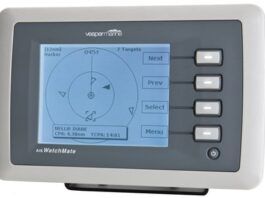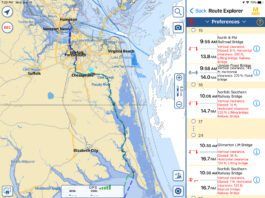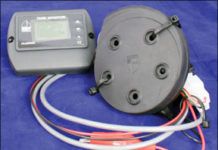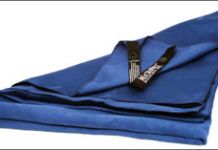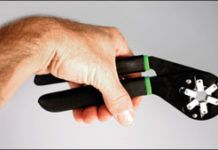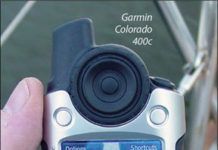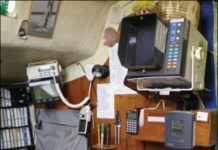Practical Sailors Gear of the Year 2009
Practical Sailor editors pored over the dozens of products reviewed in the previous months to find the best of the best sailing gear, products that are worthy of the designation Gear of the Year. This years editors choice list includes a rugged rope clutch (Spinlock), a grippy ratchet block (Ronstan), feature-filled VHF handheld radios (Standard Horizon and Cobra), high-quality nesting cookware (Magma), a proven paste wax (Collinite), an ocean-ready first-aid kit (Adventure Medical Kits), a reliable LED bulb for cabin lighting (Imtra), an economical ice box conversion kit (Frigoboat), an innovative ultrasonic tank sensor (BEP Marine), cold-weather gloves (Gill), and an easy-to-install Wi-Fi booster (5mileWiFi).
Crossing Over
When it comes to gear for the outdoor enthusiast, there are a lot of crossover products. Hikers, bikers, boaters, backpackers, and climbers share a need for lightweight, durable, and practical equipment. So as Practical Sailor editors geared up for our summer adventures, we looked for products that could serve double-duty on the boat and on the trail.
Feature-loaded High-end Marine Handheld VHF Radios
Practical Sailor tested eight high-end marine handheld VHFs from three manufacturers: Cobra, Standard Horizon, and Uniden. Among those tested were two updated Standard Horizon VHFs, the HX500S-LI and HX600S-LI, and three of the companys latest floating VHF radios, the HX750S, HX760S, and HX850S. From Uniden, testers evaluated the MHS450 and MHS550. They also tested the Cobra HH425 LI. These feature-rich handheld marine radios, priced from $130 to $350, were tested for transmitter power, frequency accuracy, frequency stability, receiver sensitivity, audio output, and audio quality. They also were submerged in fresh water, dropped from 4 feet onto concrete and batteries were left on for 15 hours to test battery life.
Marine Handheld GPS Test Update
The Delorme Earthmate PN-40 is one of the newest additions to the handheld marine electronics market. Practical Sailor evaluated the rugged, palm-sized Earthmate using the same tests used in past GPS evaluations to see how it matched up against the Garmin GPSMap 76CSx, our top performer in past tests. Testers used the unit for multiple days and rated key functions, battery life, lighting, waterproof quality, cold starts in multiple locations, and visibility under different conditions.
Next Best Thing
While world leaders and presumed financial wizards set to work trying to right the global economy with some very expensive bailers and sponges, Practical Sailor has taken the time this month to dig through our recent collection of Chandlery submissions to see if we can find anything more useful. Given sailors capacities for innovation (aka "jury rigging"), were holding out hope that the next great invention-the ultimate stimulus package-lies somewhere in our growing stockpile of Chandlery items.
Budget-friendly Handheld and Fixed-mount VHF Radios
As a follow up to Practical Sailors recent marine electronics report on mid-priced VHF radios, we evaluated three entry-level fixed-mount VHFs and three entry-level handheld VHFs priced at about $100. Marine radios in this price range lack some of the bells-and-whistles and safety features of higher-priced VHFs, but they will suit the needs of sailors on a budget or boaters looking for a backup VHF. The three fixed VHF radios tested were Cobra Marine F55, the Midland Regatta I and the Standard Horizon Eclipse GX1000S. Handheld radios tested were the Cobra MR HH325 VP, Midland Nautico NT3, and West Marine VHF55. Testers evaluated each radios transmitter, receiver, sound quality, display screen, and water resistance. Radio performance was also tested at extreme temperatures, and handheld models were dropped from 4 feet onto a concrete surface.
Practical Sailor Tests Two New Handheld GPS Units from Garmin
Garmin’s new scroll-wheel Colorado 400c and touchscreen Oregon 400c offer some unique features, but their multi-sport focus falls short in satisfying all of a mariner’s needs. Although both new units are high-quality handhelds, testers preferred an older-generation GPS, the Garmin GPSMap 76CSx, which was the Practical Sailor Best Choice in a previous test. Practical Sailor tests compared the units’ features, performance, ergonomics, and price, along with how well they meet sailors’ needs.
Solo Sailors Gear Box
First sailed in 1978, the Singlehanded TransPac (SHTP) crosses 2,120 miles of Pacific Ocean from San Francisco Bay, Calif., to Hanalei Bay, Kauai. Practical Sailor contributor and SHTP competitor Skip Allan took time out from his race preparations onboard Wildflower—his Thomas Wylie-designed 27.5-foot sloop/cutter—to open his notes on solo sailing. Last month, the veteran offshore racer and singlehanded cruiser discussed his gear, sail inventory, storm tactics, and his approach to provisioning. This month, Allan focuses on the electronics, safety gear, and routing tactics he employs when racing alone. Allan’s onboard systems include two deep-cycle wet-cell batteries that total 165 amp hours, two solar panels, and a 35-amp alternator on Wildflower’s10-horsepower Yanmar single-cylinder diesel. He has a fixed and handheld VHF, an Icom SSB radio, a Pactor modem for weather charts and weather faxes, and Winlink email. Other electronics include handheld GPS, LED lighting, and a small portable radio.
Solo Sailor’s Gear Box
First sailed in 1978, the Singlehanded TransPac (SHTP) crosses 2,120 miles of Pacific Ocean from San Francisco Bay, Calif., to Hanalei Bay, Kauai. Practical Sailor contributor and SHTP competitor Skip Allan took time out from his race preparations onboard Wildflower—his Thomas Wylie-designed 27.5-foot sloop/cutter—to open his notes on solo sailing. Last month, the veteran offshore racer and singlehanded cruiser discussed his gear, sail inventory, storm tactics, and his approach to provisioning. This month, Allan focuses on the electronics, safety gear, and routing tactics he employs when racing alone. Allan’s onboard systems include two deep-cycle wet-cell batteries that total 165 amp hours, two solar panels, and a 35-amp alternator on Wildflower’s10-horsepower Yanmar single-cylinder diesel. He has a fixed and handheld VHF, an Icom SSB radio, a Pactor modem for weather charts and weather faxes, and Winlink email. Other electronics include handheld GPS, LED lighting, and a small portable radio.
































